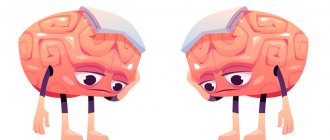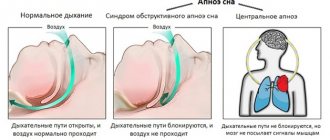02.02.2021
Sometimes scars on the soul take longer to heal than on the body...
“I scratch myself all the time.” I know this is wrong, but I can't stop. I don’t dare share my problem with my mother: I’m afraid that she will send me to a psychiatric hospital. What should I do? (call to Children's helpline 88002000122, 14 year old girl)
So what to do? Let's try to figure it out. First, recognize the problem. If you constantly bite your nails to the roots, squeeze pimples until they bleed, pull out your eyebrows or eyelashes, pinch yourself to concentrate on pain instead of fear, then you are slowly destroying your body and injuring your psyche. Self-harm - cutting, scraping, biting, hunger strikes, skin burning - is serious and dangerous. This behavior is called self-harm and is a reaction to various stressful stimuli.
What can you do to stop being a threat to yourself?
Awareness and self-control are our everything!
- Don’t be ashamed of this problem and hide it: like any other, it can be solved. To do this, you need to contact a psychologist. Don’t add difficulties to yourself and start working with a specialist.
- Analyze what needs, motives, circumstances, experiences provoke and “trigger” you to such actions, at what moment the desire to hurt yourself arises. And what, on the contrary, stops and switches to another, non-destructive action. Without analyzing the root causes, self-harm is difficult to defeat.
- At the very beginning, it is very difficult to give up the habit of taking out emotional pain on yourself. Try gentle touching on your body to keep the sensation of touching your skin without harming it. For example, move a square of ice, a cotton swab, or a watercolor brush over your hands; put the elastic band on your hand and pull it; trace your hand with a felt-tip pen and draw inside its outline, etc. Take any unwanted clothes (old jeans and T-shirts are great) and color them with markers or felt-tip pens, draw on them with any colors until it becomes easier.
- As soon as you feel that you are ready to lose your temper, switch your attention: pour yourself some tea, turn on the music, start doing any physical exercise; draw what bothers you, shade the picture, call a friend or acquaintance, surf the Internet for a new track or movie; rearrange things so as to change the situation, remember pleasant events and sensations, start breathing deeply, take a shower.
- When you want to hurt yourself, replace your body with any object or material: scratch a box, foil, cut or tear paper, bags, break matches, etc.
- It is especially important to study your anxiety and learn to take control of it at the moment of a bright outbreak. Instead of reaching for a compass or knife, follow these steps.
- Make it a rule not to suppress your feelings, but to express them openly. Hints will help you develop this skill.
Sources of Absurd Anxieties
Why does an adequate person develop images of self-destruction and fear bordering on panic? According to experts, this disorder is called obsessive-compulsive (OCD). This can happen to anyone, even if they have no idea about VSD. The projection of the state is a strong anxiety for life, not only for one’s own, but also for one’s loved ones, including animals in the house.
The fear of harming loved ones and oneself originates from affection and strong love. We love ourselves, and coupled with natural fear, such love often turns into one of the types of OCD:
- Anxiety haunts a person constantly. This happens with VSD. Other reasons for the appearance of this phobia in dystonics are as follows:
- A critical moment in a person’s life when he becomes fixated on a negative problem. Over time, anxiety grows and reaches a critical level. With dystonia, patients constantly replay negative scenes in their heads, resulting in neuroses and phobias that give a projection to the subconscious level.
- Upheavals that happened in the early years (school). This can include quarrels between parents, as a result of which the child develops a feeling of insecurity and receiving negativity from any reason or anyone. Aggression and humiliation of classmates - all these terrible factors add up to the picture of OCD.
- Low self-esteem and self-criticism program the subconscious that a person is a loser, he is far from ideal and is not in demand by society. Guilt in front of oneself forces one to defend oneself against self-dislike, and this is expressed in care, trepidation and self-pity. The result is obsessive thoughts about preventing self-destruction, neurosis.
Features of the individual, his character, fixation on negativity, anxiety, personality traits, shortcomings. There is a category of people who often or constantly “eat” themselves and delve into themselves. And then phobias tend to replace each other: one disappears, another appears.
Filter out destructive and negative
- Unfollow toxic public pages and profiles of those who actively promote self-harm and post relevant posts and photos. Know that beautiful thoughts about the art of inflicting pain on yourself are just hype on the general pain of people like you. In this way, they recruit and keep subscribers on edgy material. Those who realized that this is a serious problem have long since reoriented their public pages to help, and are posting about how to get rid of it.
- Get rid of items that you have used to harm yourself.
Replace sadness with pleasure
- Find any other ways to feel “alive” with all your senses. Sports, pleasant and bright smells, selfies in cool looks, and doing what you love are great help with this. Don't forget to treat yourself to something tasty. Self-harm is most often preceded by despondency. And it appears due to inaction and stagnation.
- Start your personal challenge “5 joys”: make a list of pleasures for each week in the form of a checklist in your phone and put + after completion. This will help boost endorphin levels (the hormone that makes you feel good) instead of adrenaline from the damage.
- Create a “gratitude” section in your diary or social media profile and look for what you can say thank you to to yourself, the people around you and situations. It could be a good grade, helping a friend, a good deed, a brave deed, expressed emotions, moments of self-care, kind words, family attention, a delicious dinner from mom, the sun outside the window, your or someone else’s smile, achievements. And special thanks for refraining from self-harm.
Selfharm is a serious psychological consequence of your problems due to the lack of support in solving them. To stop self-harming, you need to recognize the problem and the need for professional help. And you can receive it at any time. You can start by contacting the Children's Helpline service. Instead of a sharp object, this time take the phone in your hands and dial 8 800 2000 122. Psychologists will help you cope with mental pain without self-destruction.
photo ulan.mk.ru
Share on social networks:
Return to list of articles
Selfharm: why teenagers harm themselves
17.03.2021
© depositphotos.com
The inability to cope with emotions, aggression or stress, the inability to express emotions or find a solution to a problem causes some people to harm themselves.
According to the International Classification of Diseases, self-harm is not only the physical infliction of pain, but also the abuse of alcohol, drugs and medications. Self-harm is common among teenagers. This is due to an unstable psyche during the period of personality formation. According to data published in the medical journal The Lancet, girls aged 16 to 24 are most prone to self-harm.
Why teenagers start to harm themselves and how to help a child in such a situation, employees of ANO “CISM”
said clinical psychologist
Stanislava Retsa
.
– What can be considered self-harm?
– Self-harm is behavior associated with a person causing harm to himself without the purpose of committing suicide. A person intentionally cuts himself, burns himself, scratches his skin, hits himself, bites himself. The severity of self-harm and the extent of its consequences may vary.
Basic criteria for self-harmful behavior:
– the action is committed intentionally, with the aim of causing pain or physical harm to oneself;
– self-harm is not a suicide attempt, but sometimes it can be a “rehearsal” or a sign to others that a person has encountered a problem.
– Why do teenagers start harming themselves? What is the main reason?
– Self-harm is often associated with demonstrative behavior and attracting attention to oneself, so this problem is often treated with disdain. Many people believe that if a person simply requires attention, this automatically makes the problem insignificant, and his condition does not require help. But it's the other way around. If a person is ready to hurt himself for the sake of attention, then this indicates that he is in a critical condition.
The teenage period is very difficult. The child changes in all areas: both physically and psychologically. A teenager is a person caught between two worlds. He is uncomfortable in children's restrictions; he already feels closer to adults than to children. But at the same time, the autonomy and independence of an adult are not yet available to him. The world during this period begins to seem like a set of insoluble situations. At this time, relationships with peers become much more significant than before. The teenager learns to be himself, distances himself from his parents, and recognizes himself in new social roles.
And at this time something can go wrong. Communication with the team may not work out, friendship may turn into betrayal, love may not be reciprocal. And almost every experience is a teenager’s first in his life. He doesn't know how to survive this yet. An adult already has proven ways (of varying degrees of effectiveness) of how to cope with losses, disappointments, grief, problems, and conflicts. The teenager is just beginning to recognize and master them. Self-harm may be among these methods.
– Sometimes self-harm becomes an addiction, why does this happen?
– The attractiveness of self-harm lies in the fact that it is partly a physical, “real” reflection of internal suffering. When we feel bad, sad, lonely - outwardly it may not be noticeable. And traces of cuts or burns are a kind of way to “officially confirm” mental pain.
There is an unspoken message in society: “real” suffering is that which can actually be confirmed. A broken leg is an external, obvious injury. The pain of unrequited love is an internal wound that we cannot physically present. Therefore, mental pain is often devalued, since there is nothing to prove its reality.
For teenagers, selfharm becomes a “validator” of pain. This is its psychological appeal. It’s as if he allows you to say: “Look, I really feel bad.” This is where biological mechanisms come into play. When we are physically in pain, our body, in order to reduce sensitivity, produces endorphins - “happiness” hormones. Their side effect is the feeling that after pain we feel better and lighter emotionally. This is why some teenagers, in the grip of prolonged suffering, become hooked on this short-term feeling of relief. That is, self-harm becomes an addiction for a person in a chronically depressed state.
– If parents notice that a child is engaged in self-harm, how should they react correctly?
– Some parents may react to a child’s self-harming behavior with disdain. This is a strategy that helps you cope with your own anxiety, restore a sense of security and reassure yourself that everything is okay. For parents, the unfavorable state of the child, as a rule, is a source of guilt. Therefore, it is easier to convince yourself that the teenager is capricious and requires attention.
There is an opinion that self-harm is a way of manipulating others in order to get what you want. Therefore, you should not take it seriously and worry. Parents begin to act in the spirit of “You cannot reinforce unwanted behavior” and “If you do not respond to such behavior, the teenager will understand that it is useless and will stop.” The idea itself is correct. However, the problem is that neglecting or ignoring teenage self-harm is not a lack of response. This is a very definite reaction. A teenager, causing self-harm, checks how others will react to this, whether they will see that he feels bad and needs help. And if adults do not react to this, they can plunge him even deeper into a depressed state.
First of all, parents should take what is happening seriously. There is no need to be scared and immediately force your child to see a psychologist. It is necessary to carefully pay attention to wounds and abrasions, talk about your thoughts, feelings, and experiences about this. Ask how adults can help or offer whatever help they can. The main thing is to show the teenager that his feelings are accepted and respected, that there are people nearby who are ready to support him at any moment.
– What should parents do to help their child stop?
– It is difficult to develop a step-by-step algorithm, given the variety of causes of self-harmful behavior.
General recommendations are:
– Recognition by parents of the seriousness and reality of the teenager’s experiences. No matter how funny, ridiculous and naive they may seem, for a teenager this is a painful reality. If you neglect it, you can only make things worse.
– Showing attention, care, sympathy and willingness to be there and help regardless of the circumstances. The task of parents is to give the teenager confidence that he is not alone, that he is loved and cared for, no matter what.
– Do not impose the help that adults consider correct. It is better to ask the child himself how he can be helped. Offer options, accept refusal and make it clear that he has the right to change his mind at any time.
– Do not blame the teenager for your worries. Parents have the right to experience any feelings when faced with self-harm. It could be fear, guilt, despair, anger. This is normal, and adults can talk about everything. But what matters is the form in which they do it. Accusations in the spirit of: “Because of your antics, I’m not myself!”, “You want to drive me,” “Look what you’ve brought me to” will only intensify the teenager’s negative experiences. Statements about your feelings should be soft, sincere and contain acceptance of the child’s condition.
Tags:
teenagers child safety











